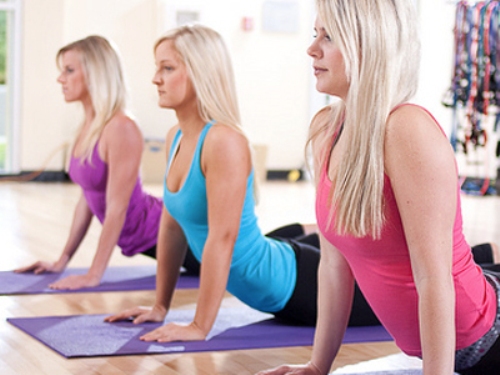
Generally, young mothers are very anxious to get back into shape and plunge into yogasanas. This can be unsafe and cause a permanent injury to the back. After childbirth, many women have a gap in the abdomen muscles because the belly expands during labor. Any posture that contracts the muscles of the abdomen or back can cause injury. Joints and ligaments get stressed when plunged into action after months of being sedentary. For those who undergo c-section, the period of healing takes longer. A doctor must be consulted before initiating any yogic postures that may damage the muscles. Yogasanas like mayurasana, paschimothanasana, shirsasana, chakrasana, dhanurasana and bhujangasana are never done just after childbirth. A period of 6 weeks is necessary to heal the body.
Chakrasana
In chakrasana or the wheel pose, you have to lie down on your back, bring feet close to the buttocks, fold the arms at the elbows and place the palms facing downwards on the floor. Then while inhaling, raise the buttocks, back, head and neck off the floor. During pregnancy and after delivery, the spine gets slightly curved in the upper portion. This asana is done by arching the spine and can cause injury and back pain. Instead the dog pose can be done in which you get onto your hands and knees, straighten your knees and lift your heels and stretch the tailbone. This will relax and strengthen the spine. This should also be done only after 6 weeks of childbirth.
Dhanurasana (bow yoga pose)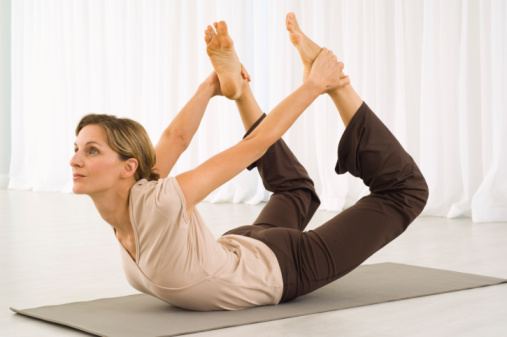
To do this asana, you must lie down on your belly. Bend your knees while exhaling and bring your heels close to your buttocks. Grasp your ankles. This makes your head and torso lift off the floor. Stay in this pose for 20 to 30 seconds. This yogasana is good for the belly muscles and spine in normal conditions, but after childbirth lying down on your belly is very uncomfortable. Instead, the shavasana or the corpse pose can be done. A new mother has to be contended with lot of physical, emotional and other role changes that could be stressful. So, shavasana with deep breathing energizes, empowers the mother after childbirth.
Paschimothanasana (forward bend)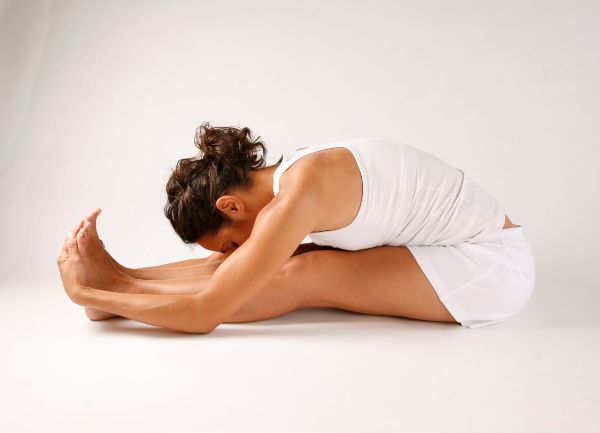
This asana stretches the back, from the neck to the tailbone. Sit on the floor with the legs stretched out in front of you and the heels put together. Keep the arms parallel and touch the toes, inhaling slowly. At the same time put your head between your hands and lean towards the toes as far as you can. Exhale and come back to the original position. In this asana, stretching the neck and spine, which are already slightly curved after delivery, can cause injury to the spine, and backache. You can try the balasana in which you sit in vajrasana or the diamond pose. Press your forehead slightly backward and bend down touching the floor, keep the arms at the sides with palms facing upwards. This is the most relaxing posture for strengthening the back, neck and shoulder muscles.
Bhujangasan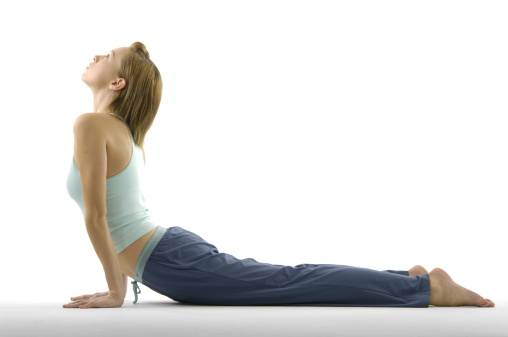
This is the cobra pose in which the spine is stretched backwards making it flexible. It relieves problems of the uterus and ovaries. Practice of this asana makes childbirth easy, but after childbirth this posture injures the spine and abdomen and should not be practiced till the body is healed and is completely fit. Lie down on the floor with the abdomen, the upper part of your feet, touching the floor. Slowly raise the head and chest upwards. Tighten the leg muscles from the waist downwards for about 6 seconds for one cycle of bhujanga asana. Soon after childbirth, it would be very uncomfortable to lie on your stomach. Deep breathing or pranayama can be tried instead.
Mayurasana (peacock pose)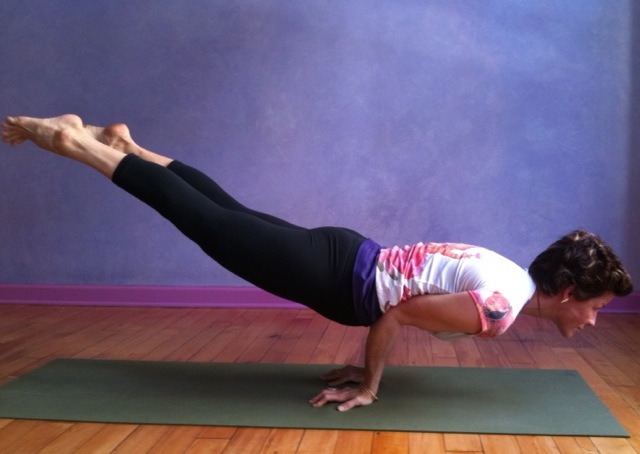
Mayurasana is a very difficult pose. Get onto your knees and hands. Keep palms pointed towards knees. Place both the elbows on either side of the navel. Slowly lift your legs and knees off the floor. Keep the legs stretched out behind you and support yourself with your elbows and palms. Retain this position for 20 seconds. This asana is excellent for digestion, diabetes and liver problems. After childbirth, it is risky to heave yourself up using the elbows because you will be straining all the muscles in your midriff. You can do badhakonasana. For this asana, you need to sit on the floor with both legs stretched in front and the spine straight up. Keep hands on the floor. Breathing normally, exhale and pull the feet close placing the heels against the perineum. Clasp the feet and lock fingers. Bring your knees down as far as it will go. Hold this posture for 30 seconds. This is good for the vaginal muscles and the abdomen and uterus.
Shirsasana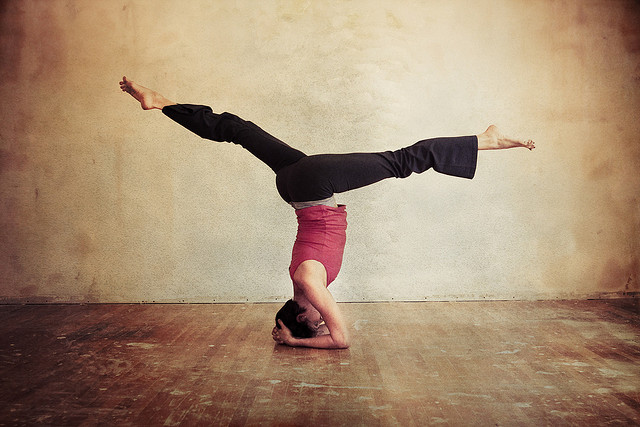
Shirsasana or the headstand is the king of all asanas and activates digestion and circulation, strengthens the whole body and calms the mind for meditation. Bend your knees and sit straight on the heels. Interlock fingers and be placed on a padded mat. Rest your head on the interlocked fingers. Raise yourself on your knees, walk a few steps towards your head. Inhale and slowly raise the legs above your head and shoulders for 15 seconds. Slowly bring your legs down and lift your head up to the original position. As the weight of the whole body falls on the head, neck and shoulders, this asana is never attempted when women have bleeding or are weak in any way. Try the warrior pose or virabhadhrasana. Stand with your feet together and arms at the sides. Use the right leg and take a big step forward while keeping your arms outstretched. Bend the right leg at the knees bringing your tailbone down and lightly stretching it. Come back to the original position. Repeat the same with the left leg. This improves the entire pelvic area and is beneficial after delivery.


